Adam McMullin, MBA is CEO of AvaSure.

Tell me about yourself and the company.
I have led AvaSure for the past two years. I have had the privilege of being involved with a number of businesses that serve providers, working with nurses and improving clinical workflow. AvaSure checks all the boxes for me personally. It’s a mission-driven organization. It’s a company that is at the middle of a transformation around how virtual care is leveraged for providers.
AvaSure is the leading intelligent virtual care platform for hospitals. We have 1,200 of them as customers. That involves patient safety, virtual care, and ambient technologies that improve safety and efficiency.
What is the state of the art in virtual care and the technologies that enable it?
Our technologies were originally the purview of the chief nurse, who is an incredibly important constituent. We have a great chief nurse advisory board to help advise us there. But almost every health system has stepped back and realized that they have virtual safety, which is also called virtual sitting. They have efforts around virtual care and virtual nursing. They have traditional programs such as tele-stroke and tele-ICU. They are also thinking about the home.
What platform that does that? You have a number of solutions that are converging to become a health system-wide platform that has evolved to do a few things. It needs to have stability across the base of the platform. It needs to work, because when you’re adopting virtual care technologies, you need utility-like performance. On top of it, the value propositions and the problems that are being addressed are very much about improving patient safety in bucket one. Virtual care broadly includes things like virtual nursing, rounding, E-ICUs, and the like.
The third leg of the stool after patient safety and virtual care is around ambient, which is emerging. We have technologies that leverage computer vision for falls reduction and patient elopement. We just acquired a business to further accelerate our efforts.
We are seeing those three domains come together. Health systems want a platform that supports that and integrates with the rest of their technology, such as their EMR, their communication systems, and other AI technologies. There’s a lot of development in the market. Virtual nursing has continued to evolve as we look at the problem sets.
How does virtual care affect nurse satisfaction and the cost of providing nursing services?
We have virtual nursing in all of the cases that we have implemented. The experience from our chief nurse advisory board has been an improvement in nurse satisfaction and virtual care broadly. If you’re in the virtual safety arena and you’re not leveraging virtual safety observation, often you are taking away the non-licensed professionals who support nurses and care teams. Virtual safety observation contributes back to the care team. If you have virtual nursing and can triage, manage patient requests, or perform more thorough and less time-consuming patient discharges and admissions, then the nurses on the floor can better leverage the top of their licensure and focus on the patients that have acute and immediate needs.
Nurses want to be able to have deep connectivity with their patients and to spend the time that is necessary. But they might be in the middle of something that takes more time. They get urgent calls and emergent calls and are pulled away. We have seen nursing satisfaction improve across the board when virtual nursing is a part of the care delivery model. It’s not a brand new care delivery model. It becomes part of the team-based care delivery model.
Have hospitals found unexpected benefits or use cases once they deploy virtual sitters as an efficient, non-intrusive set of eyes on the patient room?
Virtual sitting is a nice, effective way to get on board with virtual care. It provides financial benefit and clinical benefit. As an example, Community Health Systems had zero falls with injury once we implemented in their hospitals. That’s a clinical and financial value proposition. You support things like falls and behavioral health, which then frees up resources that can be returned to the care team, and then fund the migration from virtual sitting — which started with mobile devices and rolling something into a room — to this migration of enterprise-wide virtual care, where you are putting devices in every room. That supports those other use cases around broader virtual care and ambient.
Certain patients have a higher cognitive load and need more direct observation. We are also augmenting the virtual sitting with AI to improve effectiveness. We think that over time, the AI will advance to where you have a device in every room, and even if a patient is not being monitored by a human, we can provide an additional set of eyes on all patients. We’ve seen some interesting things as you leverage sitting and open the doors to virtual care, which then catalyzes these devices in every room that can then act as sensors. That is leveraging computer vision to do more, both clinically and operationally.
We provide our customers a maturity model around how these technologies are adopted. You can start in places that prove principles for the care teams, build confidence, and then move up the maturity model as you adopt additional use cases. We worked with both clinical and IT teams to inform that. The market maturity model it is not specific to AvaSure. It was developed in conjunction with leading clinicians and folks on the IT side. I’m thankful for all the health systems that contributed into it. It’s a useful roadmap that allows you to cut through all the noise and the fog to create a pathway to achieve the benefits of better clinical results, lower costs, and better utilization of precious human capital.
ICUs and other specialty units were mostly defined as a location that was wired for monitoring and staffed by specially trained employees. Will virtual solutions change that way of thinking?
We are all aware of the trend of rising acuity across health systems. We are seeing patients being kept in units when they might otherwise have been moved to higher-acuity units or prevented from moving to higher-acuity units.
I’ll give you an example. University of Colorado Health has published about their sepsis monitoring program that keeps people out of the ICUs. By having virtual monitoring, AI algorithm for detection, and well-trained and centralized human experts sitting in the virtual care center, they have saved 1,000 people per year from getting sepsis.
If they had sepsis or complications, they would be in the higher-acuity setting. By doing this, you are preventing issues and reducing length of stay overall, because people would be in those higher-acuity, more expensive settings and potentially be exposed to harm.
How does integration with the EHR work?
The EHR is obviously the core clinical system that we want to support and augment. Our technologies are integrated into all of the leading EHRs. In many of the EHRs, you can be in the clinical record, launch a virtual visit, and engage other providers if you’re doing a discharge. You can engage whoever is in charge of family care of the patient and loop them in from wherever they are outside the four walls of the hospital to have appropriate patient education or discharge. You can do all of that right from EHR.
We see a combination of the virtual care technologies that are tightly integrated with the EMR and other technologies that are working in the background to improve outcomes. We opened our platform. There’s so much innovation happening in this space, and we wanted our customers to know that AvaSure can support the things we do in safety, virtual care, and with computer vision and ambient. There’s a huge ecosystem out there.
We have a partnership with a company called Clew, which is the first FDA-cleared predictive model for patient deterioration. They have seen examples where alerts and alarms are reduced by 50 times. With that combination of video and documentation in the EHR, you’re see some incredible outcomes. UCHealth is using the Epic model as they support their sepsis reduction. Virtual care augments and supports the EMR.
How will the acquisition of Ouva affect AvaSure’s capabilities and strategy?
Since we talked last 18 months ago, we have more than doubled the folks that we have in R&D. As the largest company in the health system-focused virtual care market, we are committed to leading and developing the best technology. But as I mentioned, there’s a lot happening out there. That’s organic, the things that we’re doing within AvaSure where we are spending time and investing.
I mentioned that we completely opened up our platform, and anything our customers want to integrate, we have a standard API for that. We’re going to continue to build a greater number of partners that are pre-integrated and pre-packaged for the benefit of our customers, or if there’s anything they want to integrate, there’s a standard way of doing it.
When you get to M&A, any time that we can accelerate accelerate the strategy and gain team members who wake up every morning and have the same mission -driven passion that we do for improving the environment for care teams and patient safety, then we are really interested in doing that.
Ouva was a great example. Our AI at the time was focused on patient safety. Ouva added additional patient safety modules and modules that support operational elements, such as patient flow. Is a room ready to be leveraged by a patient? They had staff rounding. It was a natural fit where we gained the research that they had done within hospitals, the technology, and a team. That allows us to go faster, be better, and deliver more value for our customers.
Given that we have this large base of 1,200 hospitals, we’re at a great point to bring in emerging, high-value technologies. It’s hard to get things into healthcare, but we can put them on our platform to make them available to our customers.
You spent years as an executive with Hill-Rom, which has been acquired by Baxter, and that company as well as Stryker have extended their reach beyond beds and medical equipment and into digital health and AI. What ambitions do they have for doing more in the patient’s room?
We partner with both of them. They are continuing to build their IT portfolios to best serve their customers. Over time, we’ll probably continue to see more acquisitive activity.
What possibilities does AI add to your offerings?
We as a company are focused on computer vision and noticing more things that are happening in the room. We also have in-flight partnerships around large language models that will be coming to address nursing documentation, but that’s not at our core. That’s an example of where we’ll partner.
Computer vision is in our core. We’ll still partner with others in that space, but computer vision has actually been around for a long time. We see it obviously in the autonomous driving space and it’s been in manufacturing. With machine learning and AI around computer vision, we can already see if a patient is getting out of bed and is at risk at a fall. If you’re a behavioral health patient and you’re moving around the room, you can be at risk of elopement and leaving your room, and we can look for that.
With Ouva, we picked up technology to know about mobility. If you’re in a hospital and you’re in the bed all the time, that’s bad. You want to be up, be mobile, and prevent bed sores. We can provide data around mobility along with operational elements such as bed management and staff rounding. Those are all things that we have today.
What I’m excited about in the future is that we are quickly adding technology around caregiver harm, which has unfortunately been increasing. We can provide ambient tools for caregivers to leverage if they feel that they are in a position of risk and then alert folks.
We are adding through partnership. There is computer vision technology to start looking at vitals detection, so you can do a better job at spotting patient deterioration and intervening early where you can have better outcomes. Nutrition workflows. Once you have that device in the room, computer vision continues to open up really interesting possibilities. If you had a hospital expert observing in the room all the time, think about how efficiently the activities could be coordinated in that room for the benefit of a patient. In essence, you’re automating that with AI.
For now and for the foreseeable future, though, we’re going to make sure that we keep a human in the loop. We don’t want to go back to the days of proliferating nuisance alarms. We think that we can continue to improve the effectiveness of the humans in virtual care centers and other settings with the AI, and then over time, provide a level of non-human in the loop, truly autonomous observation for patients who are at lower risk, and also for operational issues.
What will be important to the company over the next few years?
The most important thing to us is that we continue to be the company – we are 15% nurses combined with the technology platform and we we just redid our analytics layer – that combines all of that to make sure that our customers get proven ROI and clinical benefits. That we’re a trusted partner with these technologies that allow health systems to mature as they adopt virtual care and ambient technologies.
Comments Off on HIStalk Interviews Adam McMullin, CEO, AvaSure
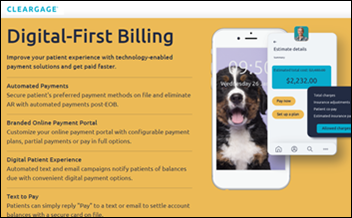

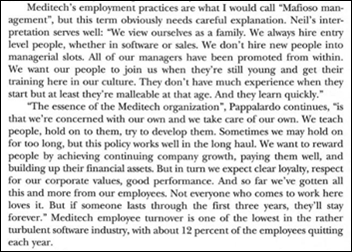


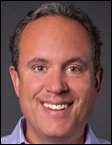
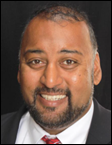








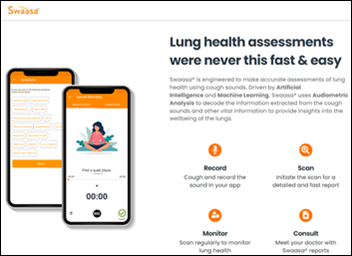



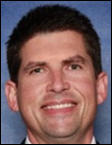



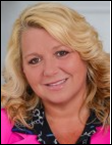
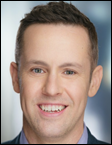


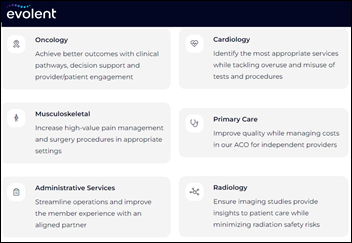







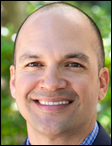




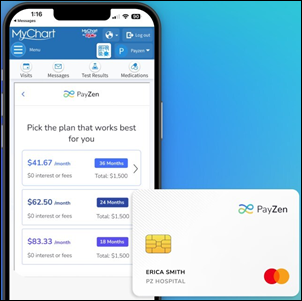

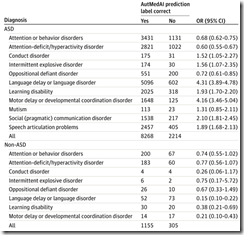
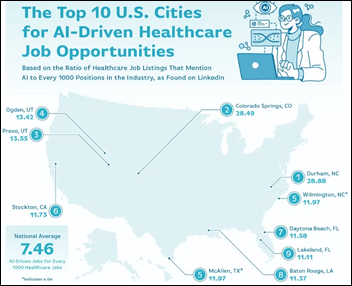
RE NEJM piece: He shouldn’t future-conditional with “they can retreat, which might mean abdicating medicine’s broad public role, perhaps in…